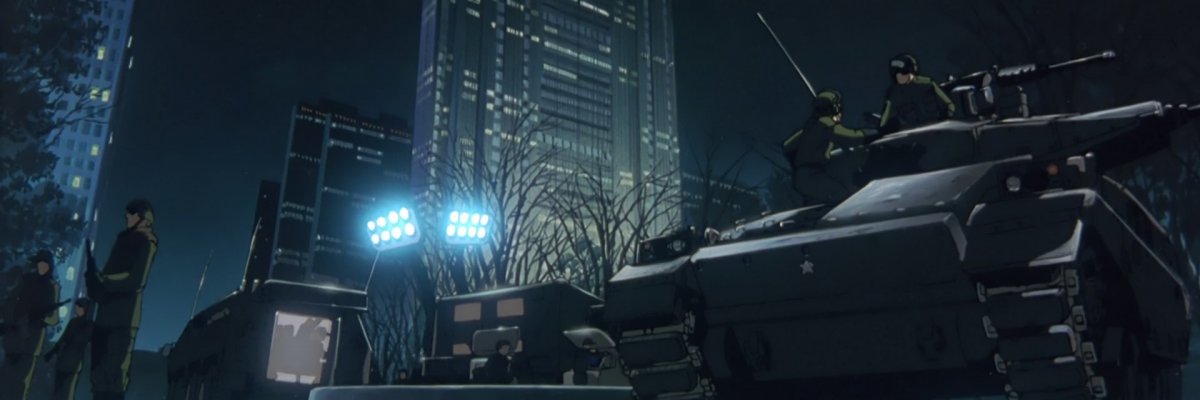While previous iterations of the Patlabor series had a heavy focus on political themes, the 1993 anime movie Patlabor 2 shifted its attention to both domestic and international issues faced by the Japanese government in the 20th century. Directed by the highly respected and influential anime filmmaker Mamoru Oshii, Patlabor 2 is praised for its intelligent storytelling, impressive animation, and thought-provoking themes.
Oshii’s contributions to the anime industry, particularly in the mecha and cyberpunk genres, have earned him numerous awards and honors. His works have been exhibited at major film festivals around the world, including Cannes and the Venice Film Festival. Some of his most famous works include the anime film Ghost in the Shell, considered a masterpiece of the cyberpunk genre, and the anime series Patlabor: The Mobile Police, of which Patlabor 2 is a sequel.
Set in a near future where mecha robots called “Labors” are widely used for construction and heavy industry, Patlabor 2 follows the investigation of the Special Vehicles Unit 2, a division of the Tokyo Metropolitan Police Department, into a series of terrorist attacks carried out by a rogue military faction attempting to take control of the Japanese government. The film’s main characters include members of the Special Vehicles Unit 2, including the protagonist Noa Izumi, as well as members of the military faction carrying out the attacks.
Despite initially receiving little critical attention, Patlabor 2 has gained a strong following among fans. Its complex themes, philosophical undertones, and political commentary on subjects such as nationalism, government corruption, and the morality of warfare have earned it praise as one of the best anime movies of all time and a masterpiece of the mecha genre.
- Mamoru Oshii has also directed several live-action films, including Avalon (2001) and The Sky Crawlers (2008).
- The Patlabor franchise was created by Headgear, a group of Japanese anime industry veterans who wanted to create a realistic mecha series that focused on the everyday lives of the people who operated the robots. The franchise includes several anime series, movies, and OVAs (original video animations).
- Patlabor 2 was inspired by the real-life political events of the 1990s in Japan, including the Aum Shinrikyo cult’s sarin gas attack on the Tokyo subway system in 1995 and the JAL Flight 123 crash in 1985.
- The movie’s soundtrack was composed by Kenji Kawai, who also composed the music for Ghost in the Shell.
- The Winsor McCay Award that Mamoru Oshii received is considered one of the most prestigious awards in the animation industry. It is named after Winsor McCay, an early pioneer of animation and the creator of the comic strip Little Nemo in Slumberland.
- Anime News Network’s Encyclopedia entry on Patlabor 2: https://www.animenewsnetwork.com/encyclopedia/anime.php?id=404
- Interview with Mamoru Oshii about Patlabor 2: https://youtu.be/BYLZGJb2HA8
The movie is often praised for its intelligent storytelling, impressive animation, and thought-provoking themes. It is considered one of the best anime movies of all time and a masterpiece of the mecha genre.
Interviews and sources used by Under The Scope for his exceptional video: The Illusion of Peace in Mamoru Oshii’s Patlabor 2:
- 1993 Interview with Animage magazine: http://www.nausicaa.net/miyazaki/interviews/m_oshii_patlabor2.html
- 1996 Interview with Animerica magazine: http://listification.blogspot.com/2016/02/mamoru-oshii-interviewed-by-carl-gustav.html
- Anderson, M. Oshii Mamoru’s Patlabor 2: Terror, Theatricality, and Exceptions That Prove the Rule (2009).
- Cooney, K. Japan’s Foreign Policy Since 1945 (2006).
- Mulloy, G. Japan Self-Defense Forces’ Overseas Dispatch Operations in the 1990s: Effective International Actors? (2011).
- Ruh, B. Stray Dog of Anime: The Films of Mamoru Oshii (2004).
